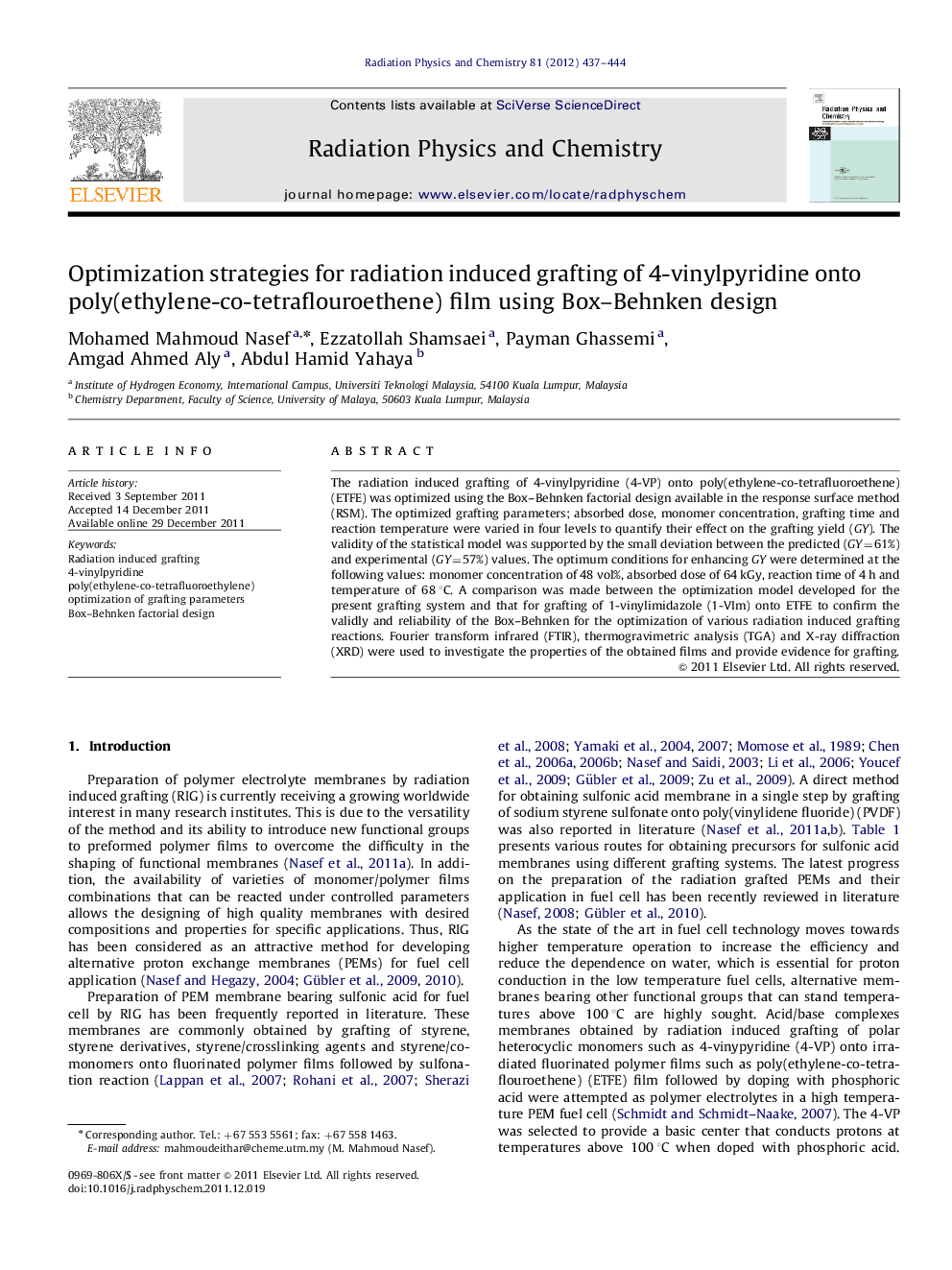| Article ID | Journal | Published Year | Pages | File Type |
|---|---|---|---|---|
| 1886413 | Radiation Physics and Chemistry | 2012 | 8 Pages |
The radiation induced grafting of 4-vinylpyridine (4-VP) onto poly(ethylene-co-tetrafluoroethene) (ETFE) was optimized using the Box–Behnken factorial design available in the response surface method (RSM). The optimized grafting parameters; absorbed dose, monomer concentration, grafting time and reaction temperature were varied in four levels to quantify their effect on the grafting yield (GY). The validity of the statistical model was supported by the small deviation between the predicted (GY=61%) and experimental (GY=57%) values. The optimum conditions for enhancing GY were determined at the following values: monomer concentration of 48 vol%, absorbed dose of 64 kGy, reaction time of 4 h and temperature of 68 °C. A comparison was made between the optimization model developed for the present grafting system and that for grafting of 1-vinylimidazole (1-VIm) onto ETFE to confirm the validly and reliability of the Box–Behnken for the optimization of various radiation induced grafting reactions. Fourier transform infrared (FTIR), thermogravimetric analysis (TGA) and X-ray diffraction (XRD) were used to investigate the properties of the obtained films and provide evidence for grafting.
► Radiation induced grafting of 4-VP onto ETFE was studied in comparison of that of VIm onto ETFE. ► The parameters of grafting reaction were optimized using Box–Behnken factorial design. ► A statistical model to predict G% was developed taking the nature of 4-VP into account. ► The predicted response value agreed well with the experimental data as indicated by a 4% deviation. ► The model proved to be valid and reliable tool for predicting various radiation grafting reactions.
